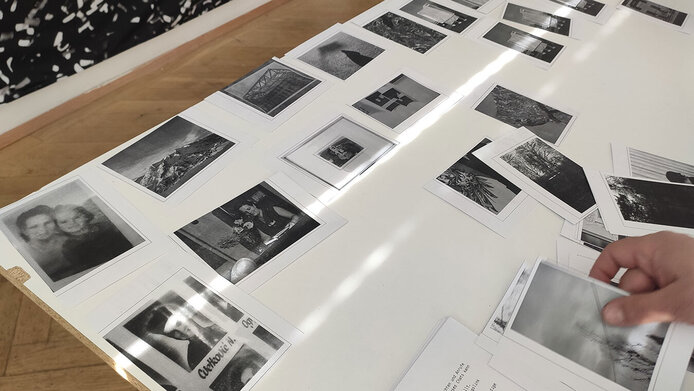Harnessing the power of art

Europe may well wish to banish wars to museums and control migration, but current events will not allow that. Right now, thousands of Ukrainians are fleeing the Russian war. What should Austrian society, the national administration and (inter)national policy-makers do with them and for them? What will their experience of arriving in Austria be, and who will take care of their integration and how? Given that migration remains steadfastly on the agenda, the sociologists Michael Parzer, Ana Mijić and Lisa Bock from the University of Vienna intend to update the topics and methods of their scholarly research in the transdisciplinary project “The Art of Arrival”.
“We want to harness the transformative power of art from its creation to its reception by others,” says the principal investigator Michael Parzer, and he adds: “The artistic exploration of the experience of arrival can be an interface for rethinking notions and assumptions, for finding new perspectives, alternative perceptions and utopias, in the post-migration society of the 21st century.” The starting point for the collaboration with nine selected artists with and without refugee experience, from the fields of literature, music and photography, is the discomfort migration researchers feel with regard to the traditional concept of integration, i.e. the idea that minorities in a society have to adapt and submit to the majority.
Processing the experience of arriving
“All the artists we approached were immediately keen to participate,” says Lisa Bock. Divided into three teams, they were tasked with creating a work of art in their respective discipline that incorporated experiences of arrival. The researchers documented and observed the creative process in a real-world laboratory. “Each team included one artist without any apparent experience of flight, one whose flight from the war in the former Yugoslavia dated back to the early 1990s, and one refugee from the war in Syria in 2015/2016,” Bock reports. Before the work began, the sociologists explained their methods and established consensus with a view to their scientific engagement.
At the moment, the research team evaluates the audio and video recordings, as well as team chats on the project. In order to ensure openness in terms of content, the researchers are only now starting to develop hypotheses. Michael Parzer is particularly excited about the translation processes which the sociologists want to use for developing methods for the “superdiverse” society of today. In addition to different languages, the artist teams include different cultural codes and artistic traditions, and are confronted with exchanging experiences of flight, their translation into aesthetic practice and, of course, the exchanges between (newly) arriving artists and established artists.
Multiple translation processes
“In the project, we have replaced the term integration with the term Ankommen (arrival) used by the German sociologist Ludger Pries: it comes with less of a bias and takes into account the processual nature of arrival, which also depends on the receiving society,” notes Ana Mijić. Parallel to the evaluations from step one, the second phase sees the researchers asking mixed groups to discuss the artworks. Phase one produced three pieces of music that relate to each other, a jointly written short story, and a documentation of the group chat about the photographic work. These chats are also documented in anonymised form. The aim is to investigate the extent to which the artistic translation process can motivate viewers to reframe concepts such as “integration” and seek alternative perspectives on the arrival of refugees. Together with the central findings from the research, the artworks will be presented at an event upon completion of the project.
In addition, Michael Parzer, Ana Mijić and Lisa Bock are currently trying to integrate Ukrainian refugees into the project. Finally, in step three, the feedback from the recipients will be fed back to the nine artists by March 2023 and the experiences and research findings will be discussed once again. The transdisciplinary project “The Art of Arrival” is conducted under the 1000 Ideas Programme of the Austrian Science Fund FWF, which supports research ideas and approaches that lie outside the current scientific understanding. Given that the project is moving in uncharted territory, the project team appreciated the important support of the advisory board.
Personal details
Michael Parzer studied sociology and musicology in Linz and Vienna and in 2019 was appointed assistant professor at the Department of Sociology at the University of Vienna. His research focuses on the cultural and sociological study of social inequality(-ies); other main interests include flight, migration, art, and methods of empirical social research.
Project website: https://artofarriving.univie.ac.at
Publications
Mijić A., Parzer M.: The Art of Arriving: A New Methodological Approach to Reframing “Refugee Integration”, in: International Journal of Qualitative Methods, 21, 1-9, 2022
Parzer M.: Double burden of representation: How ethnic and refugee categorisation shapes Syrian migrants' artistic practices in Austria, in: Journal of Ethnic and Migration Studies, Vol. 47(11), 2021






